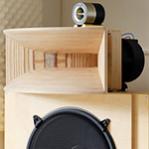Based on some of the responses in this very thread, I doubt we all are (talking about the same thing)...
100% agreed (bold emphasis mine).
I would add that a true test for the ability to reproduce such an illusion of "soundstage" must start with a recording where natural, low-level acoustical cues of the original recording space are present in the first place. Multi-mike, multi-tracked, artificially pan-potted recordings - such as e.g., The Dark Side of The Moon mentioned in another post in this thread - can certainly sound immersive and impressive in their own right, but they aren't the right tool to ascertain a system's ability to truly "image", in my opinion.
Marco





 Reply With Quote
Reply With Quote



